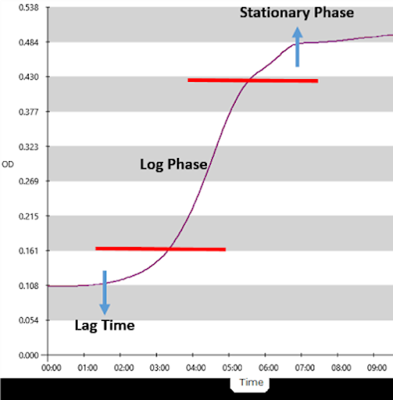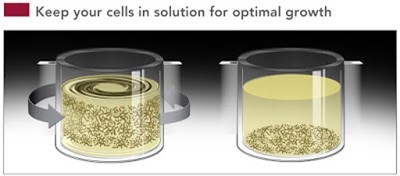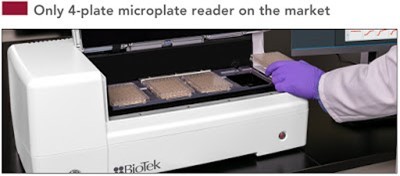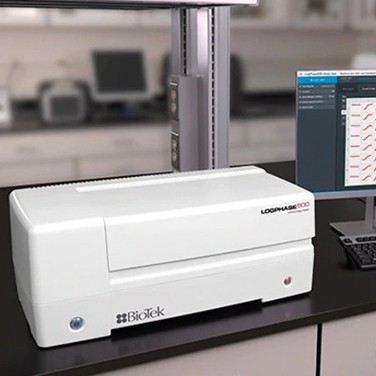A Dedicated Solution for Microbial Growth Analysis
By JD Herlihy, Product Manager, BioTek Instruments
The global microbiome is composed of the bacteria, algae, fungi, and other microorganisms that surround us and form the foundation of our world. While microbiologists have been studying these organisms for centuries, we are just starting to understand the complexity and diversity of microbes as tools and agents in disease pathophysiology.
Microbial growth has traditionally been measured using optical density measurements, most often taken at 600 nm as a proxy for turbidity. First, the microbes are grown in an Erlenmeyer flask using a shaking incubator. The changes in optical density of the cell suspension over time are determined spectrophotometrically using a 1 cm cuvette. Such kinetic analyses of microbial growth provide robust data on lag times, log phases, and the time needed to reach the stationary growth phase. But they are also laborious, requiring that each culture be sampled at multiple stages of growth: 6, 12, and 24 hours as well as longer periods.

Figure 1. Three phenotypic characteristics used to measure microbial growth and the differences between microbial samples.
The transition to multi-well plates and incubated microplate readers has greatly increased throughput and automated data acquisition. However, microplate readers have some limitations when performing microbial growth analysis.
These limitations have restricted the ability to fully realize the increased throughput and other automation aspects of microplate readers. Under normal aerobic growth conditions, accurate growth measurements require efficient sample mixing and controlled incubation temperatures. And since the plates require constant shaking and incubation, growth analyses have been limited to one plate per instrument.
Mixing is also critical to delivering accurate results in two ways. First, the samples must be properly aerated so that dissolved oxygen is not a limiting growth factor. And second, inconsistently suspended cells can lead to artifacts in turbidity measurements. Surface tension in the small diameters of microtiter plate wells makes it difficult to get proper sample mixing. Also, the mechanics of some microplate readers cannot tolerate the rigorous shaking required to break the surface tension in microwells.

Another critical element of microbial growth is temperature. Microorganisms are highly temperature sensitive, so fluctuations and gradations in incubation temperatures can create inconsistent growth and edge or plate effects. Without proper temperature control, results are variable and unreliable.
The BioTek LogPhase 600 is the first microplate reader dedicated to microbial growth analysis and addresses the earlier constraints of microplate readers. The shaking speed and amplitude of the LogPhase 600 was designed to rigorously shake samples for proper aeration and sample suspension. The shaking mechanism has limited mechanical connections and a robust motor. It has been painstakingly tested to deliver a lifetime of robust performance.
The incubation chamber has also been carefully designed with 11 independent thermistors that measure and adjust temperatures to maintain consistent conditions. Dedicated to a single application, LogPhase 600 reliably delivers high-quality data and accommodates four microplates at a time.


